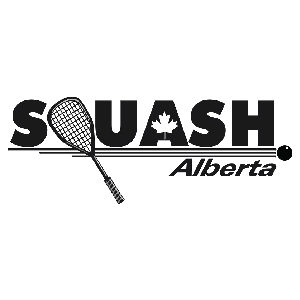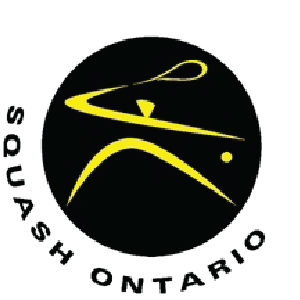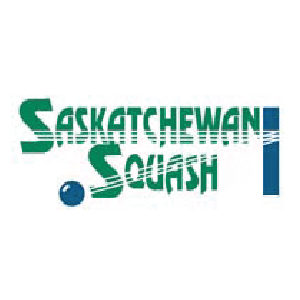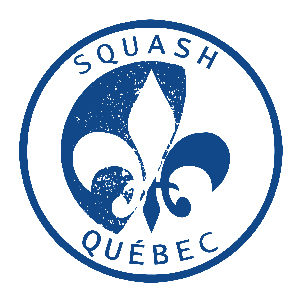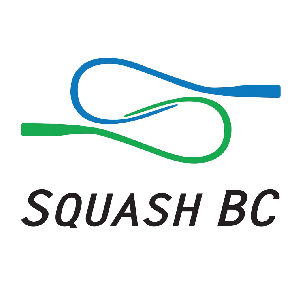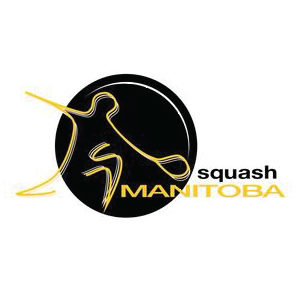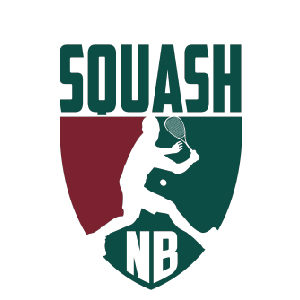Squash Canada recognizes the importance of long-term athlete development. That’s why our program teaches kids how to achieve healthy sporting success from childhood through adulthood.

Long-Term Athlete Development (LTAD) is a seven-stage training, competition, and recovery pathway that guides an individual’s experience in physical activity and sport through childhood, teenage years, and adulthood. The LTAD serves as new way of thinking on how to best deliver sport and physical activity to Canadians.
 We acknowledge the financial support of the Government of Canada through Sport Canada, a branch of the department of Canadian Heritage.
We acknowledge the financial support of the Government of Canada through Sport Canada, a branch of the department of Canadian Heritage.
Beyond the Nick discusses the importance of an integrated and aligned system of qualified instruction and coaching at all levels of participation within the Canadian Squash system that focuses on the needs and development of the player.
For athletes, it offers an avenue to achieve excellence and podium performances in the game we all love: Squash. For many more, it provides a fun, recreational pursuit that promotes physical, mental, and emotional health.
Beyond the Nick: Squash Canada’s Guide to Long Term Player Development
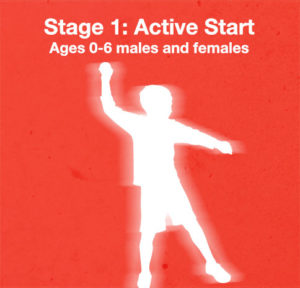 We know how important physical activity is to a healthy lifestyle, and why it is so vital to make sure children are active from a young age. Active start is about developing a child’s fundamental movement skills in the environments they are already a part of – at daycare or school, on the playground, at home or in the backyard. In this section, parents can find easy ways to get their toddler and primary aged child active from the start, and introduce them not only to physical activity and sport, but also specifically to squash. Click here for more information.
We know how important physical activity is to a healthy lifestyle, and why it is so vital to make sure children are active from a young age. Active start is about developing a child’s fundamental movement skills in the environments they are already a part of – at daycare or school, on the playground, at home or in the backyard. In this section, parents can find easy ways to get their toddler and primary aged child active from the start, and introduce them not only to physical activity and sport, but also specifically to squash. Click here for more information.
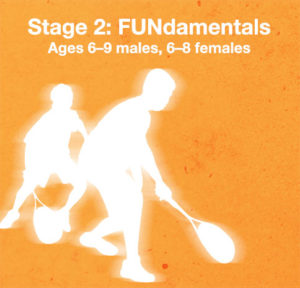 FUNdamentals is about utilizing a fun and laid back environment to begin to develop the fundamental movement and sports skills that play such a critical role in squash. Children should be encouraged to compete against themselves as well as in fun and entertaining game formats with fellow children. It is important to emphasize the ABCs (Agility, Balance, and Coordination) but to do so in a relaxed environment. Children should be encouraged to participate in other sports and physical activities to continue to improve their fundamental movement and sports skills across several mediums. Click here for more information.
FUNdamentals is about utilizing a fun and laid back environment to begin to develop the fundamental movement and sports skills that play such a critical role in squash. Children should be encouraged to compete against themselves as well as in fun and entertaining game formats with fellow children. It is important to emphasize the ABCs (Agility, Balance, and Coordination) but to do so in a relaxed environment. Children should be encouraged to participate in other sports and physical activities to continue to improve their fundamental movement and sports skills across several mediums. Click here for more information.
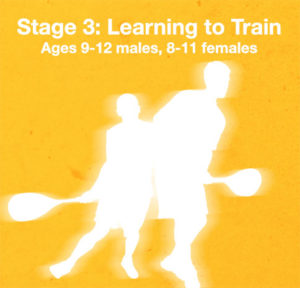 The importance of a proper training routine cannot be understated. Learning to Train focuses on teaching young squash players the significance of training by focusing on building their technical and tactical skills. Learning to Train involves developing squash-specific skills through a concentration on the technical concepts of power under control, consistent grip, and hitting the ball with varying degrees of height, direction, spin, and distance, and the tactical concepts of the importance of the “T” and playing offense vs. defense. Children can begin to play within a competitive environment but the ratio between training and competing should be 80% training, 20% competing. Children should also be encouraged to play several other sports to help further develop fundamental sport and movement skills. Click here for more information.
The importance of a proper training routine cannot be understated. Learning to Train focuses on teaching young squash players the significance of training by focusing on building their technical and tactical skills. Learning to Train involves developing squash-specific skills through a concentration on the technical concepts of power under control, consistent grip, and hitting the ball with varying degrees of height, direction, spin, and distance, and the tactical concepts of the importance of the “T” and playing offense vs. defense. Children can begin to play within a competitive environment but the ratio between training and competing should be 80% training, 20% competing. Children should also be encouraged to play several other sports to help further develop fundamental sport and movement skills. Click here for more information.
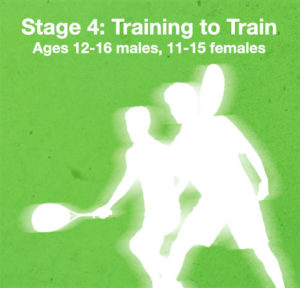 Specialization is critical in helping an athlete improve more efficiently and effectively in their desired sport. In the Training to Train stage, players will continue to develop squash-specific skills and begin the process of refining them. Important emphasis will be placed on court movement and perfecting the repertoire of squash shots. On the tactical side, the concept of understanding an opponent’s strategy and how avoid their strengths and capitalize on their weaknesses will be developed. Players will be taught the importance of planning and setting goals. Competition play will increase in the Training to Train stage but players should still spend more time training then competing. Specialization begins to play a key role at this stage of the process but it is still important for kids to play in at least one other sport so they can continue building fundamental sport skills. Click here for more information.
Specialization is critical in helping an athlete improve more efficiently and effectively in their desired sport. In the Training to Train stage, players will continue to develop squash-specific skills and begin the process of refining them. Important emphasis will be placed on court movement and perfecting the repertoire of squash shots. On the tactical side, the concept of understanding an opponent’s strategy and how avoid their strengths and capitalize on their weaknesses will be developed. Players will be taught the importance of planning and setting goals. Competition play will increase in the Training to Train stage but players should still spend more time training then competing. Specialization begins to play a key role at this stage of the process but it is still important for kids to play in at least one other sport so they can continue building fundamental sport skills. Click here for more information.
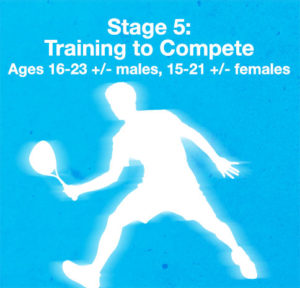 There comes a time where everyone in their life faces tough decisions and makes tough choices – and that is no different for the young athlete. Until this point, athletes are training and excelling in different sports, learning about what they can do physically and what stimulates them the most mentally. In order to reach your full potential and compete at the highest levels, you need to fully commit to your sport and specialize your skills. Training should be changed drastically, to more frequent sessions and more squash specific activities. Here you can find information about how to commit yourself to your squash game and become the best squash player you can be. Click here for more information.
There comes a time where everyone in their life faces tough decisions and makes tough choices – and that is no different for the young athlete. Until this point, athletes are training and excelling in different sports, learning about what they can do physically and what stimulates them the most mentally. In order to reach your full potential and compete at the highest levels, you need to fully commit to your sport and specialize your skills. Training should be changed drastically, to more frequent sessions and more squash specific activities. Here you can find information about how to commit yourself to your squash game and become the best squash player you can be. Click here for more information.
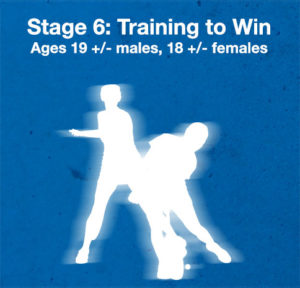 You’ve spent countless hours on the court training, played in hundreds of matches and are playing at the provincial or national level. At this point, you know a ton about the game, have developed your skills and have your own set of strengths and weaknesses. You’ve developed YOUR game, and you’re ready to fine tune it. At this point of athletic competition, it often comes down to the finer details of the game, which take increased analysis and individualized training. We will provide you with some information on how to access these resources to help you reach that pinnacle part of your game and find podium finishes. Click here for more information.
You’ve spent countless hours on the court training, played in hundreds of matches and are playing at the provincial or national level. At this point, you know a ton about the game, have developed your skills and have your own set of strengths and weaknesses. You’ve developed YOUR game, and you’re ready to fine tune it. At this point of athletic competition, it often comes down to the finer details of the game, which take increased analysis and individualized training. We will provide you with some information on how to access these resources to help you reach that pinnacle part of your game and find podium finishes. Click here for more information.
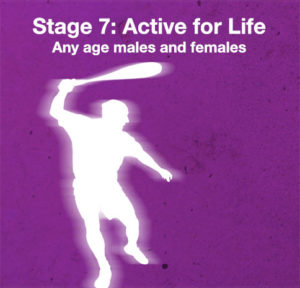 Squash is a very unique, and a wonderful sport, in that it appeals to people of ALL ages. Not many sports will see active participants from age 5-95! Active for Life is the stage that appeals to players of all ages, and all skill levels. Whether you are a retired professional player who is looking to stay in the game, a parent who wants to try it for themselves, or a young athlete wanting to participate at a more recreational level, there are squash programs and activities for you. Here we will outline different programs, activities and events for the Active for Life player, and highlight some of the best attributes of squash – that is it fun, accessible, a perfect activity to maintain a healthy lifestyle, and most of all that it is for EVERYONE! Click here for more information.
Squash is a very unique, and a wonderful sport, in that it appeals to people of ALL ages. Not many sports will see active participants from age 5-95! Active for Life is the stage that appeals to players of all ages, and all skill levels. Whether you are a retired professional player who is looking to stay in the game, a parent who wants to try it for themselves, or a young athlete wanting to participate at a more recreational level, there are squash programs and activities for you. Here we will outline different programs, activities and events for the Active for Life player, and highlight some of the best attributes of squash – that is it fun, accessible, a perfect activity to maintain a healthy lifestyle, and most of all that it is for EVERYONE! Click here for more information.
The LTAD path provides coaches with a development tool that serves as a foundation for  the successful growth of squash players. The following coaching section will detail different coaching tips and techniques that can be used to facilitate a more efficient and effective development process in athletes. The LTAD delivers coaches a range of the training methods that focus on improving both the physical and mental skillset of an athlete. In addition to the LTAD path, the coaching section gives coaches access to other valuable resources and factors that play a key role in and successful training and athlete development.
the successful growth of squash players. The following coaching section will detail different coaching tips and techniques that can be used to facilitate a more efficient and effective development process in athletes. The LTAD delivers coaches a range of the training methods that focus on improving both the physical and mental skillset of an athlete. In addition to the LTAD path, the coaching section gives coaches access to other valuable resources and factors that play a key role in and successful training and athlete development.
Coaching Resources
The following tabs contain documents that coaches can use to teach young players the fundamental techniques, strokes, and strategy involved in the game of squash.
- Grip, Ready Position, and the Swing
- Use the following link for information on teaching the fundamental aspects of the squash stroke – Grip, Ready, Position and Swing
- Forehand and Backhand Drive
-
Use the following link for information on teaching the forehand and backhand drive – The Forehand and Backhand Drive
-
- The Volley
- Use the following link for information on teaching the forehand and backhand volley –Forehand and Backhand-Volley
- Lob Service and Return of Serve
- Use the following link for information on teaching the lob service and to return serve – Lob Service and Return of Serve
- Gameplay
- Use the following link for information on teaching basic strategy and tactics, proper movement, and warm up activities – Gameplay
- Physical Activity: FUNdamentals
- The following link contains drills and exercises that can be used to promote athleticism in children – FUNdamentals
- Training Skills for Squash
- A lot of physical and psychological skills are required to play squash. In high performance competition, the development of these capacities becomes even more critical. The attached document provides a detailed analysis of squash specific activities, preparation and recovery recommendations, and psychological skills for squash athletes in relation to the stages of long term athlete development. – Training Skills for Squash
- Squash Talent Evaluation
- Squash Fitness Protocol Manual
- Tactics and Strategy in Squash
Athletic development in children and young adults is not a process that happens only during training periods. The rate of skill set growth in young athletes is determined by a wide variety of factors and an informed parent can play a crucial role in helping a child polish their skills more effectively. The following section will detail different areas of athletic development that parents can play an integral role in, including nutritional tips and simple exercises that can be used to facilitate skill growth in children. The resources in this section will help parents create a home environment that is conducive to athletic development.
- Introduction to Physical Literacy
- Play Activities – The First Year of Life
- Play Activities – Ages Three to Six (Active Start)
- Developing Agility, Balance and Coordination (Active Start)
- Encouraging Different Types of Play (Active Start)
- Helping Children Play – The Adult Role (Active Start)
- Normal Childhood Development of Physical Skills (Active Start)

